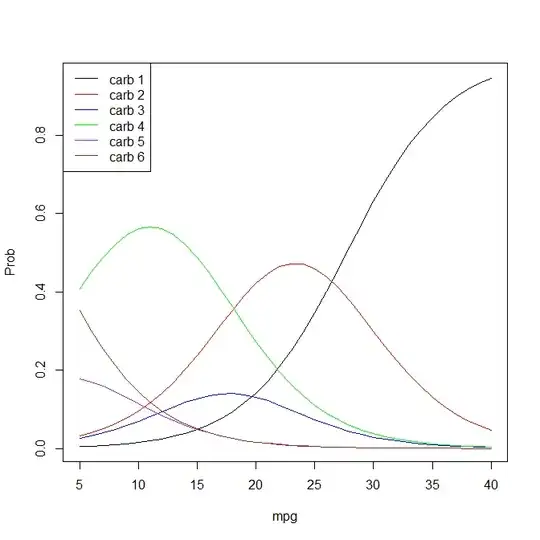I ran this ordinal logistic regression in R:
mtcars_ordinal <- polr(as.factor(carb) ~ mpg, mtcars)
I got this summary of the model:
summary(mtcars_ordinal)
Re-fitting to get Hessian
Call:
polr(formula = as.factor(carb) ~ mpg, data = mtcars)
Coefficients:
Value Std. Error t value
mpg -0.2335 0.06855 -3.406
Intercepts:
Value Std. Error t value
1|2 -6.4706 1.6443 -3.9352
2|3 -4.4158 1.3634 -3.2388
3|4 -3.8508 1.3087 -2.9425
4|6 -1.2829 1.3254 -0.9679
6|8 -0.5544 1.5018 -0.3692
Residual Deviance: 81.36633
AIC: 93.36633
I can get the log odds of the coefficient for mpg like this:
exp(coef(mtcars_ordinal))
mpg
0.7917679
And the the log odds of the thresholds like:
exp(mtcars_ordinal$zeta)
1|2 2|3 3|4 4|6 6|8
0.001548286 0.012084834 0.021262900 0.277242397 0.574406353
Could someone tell me if my interpretation of this model is correct:
As
mpgincreases by one unit, the odds of moving from category 1 ofcarbinto any of the other 5 categories, decreases by -0.23. If the log odds crosses the threshold of 0.0015, then the predicted value for a car will be category 2 ofcarb. If the log odds crosses the threshold of 0.0121, then the predicted value for a car will be category 3 ofcarb, and so on.
